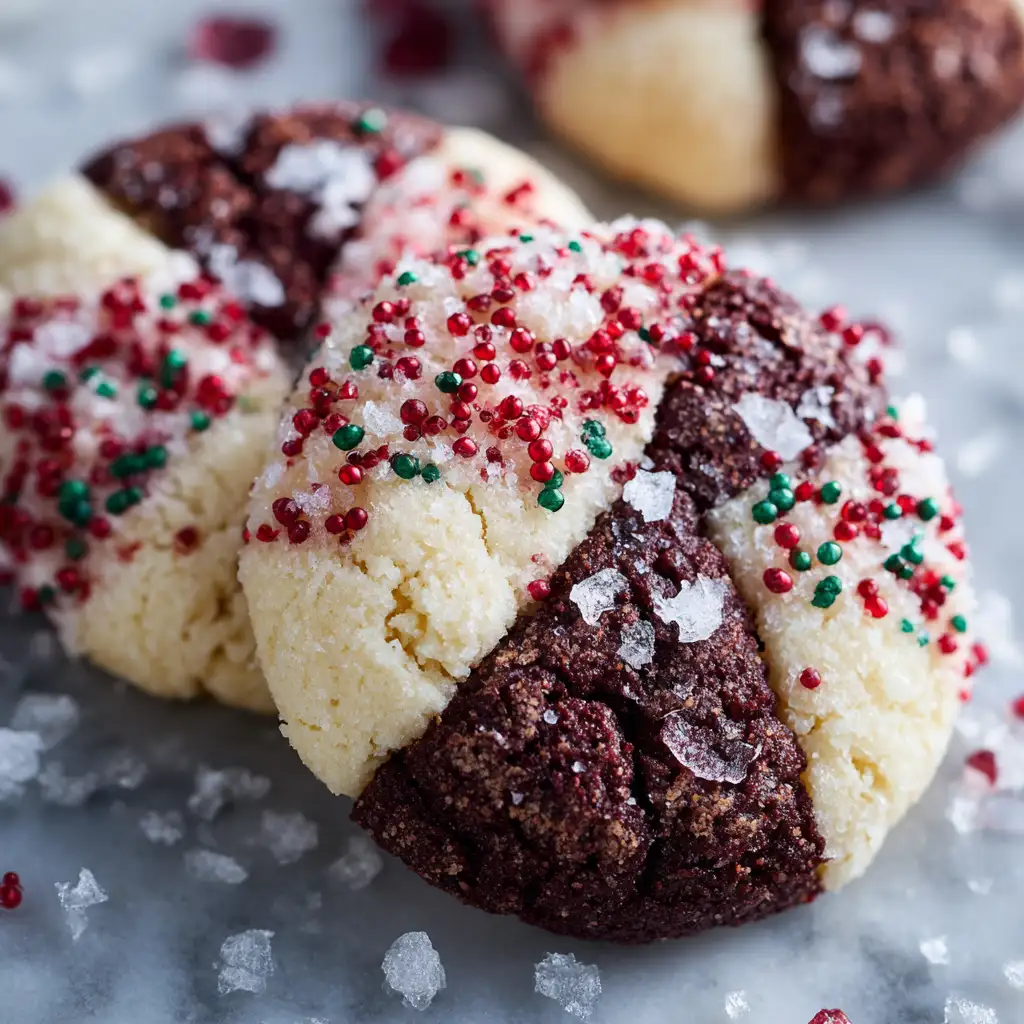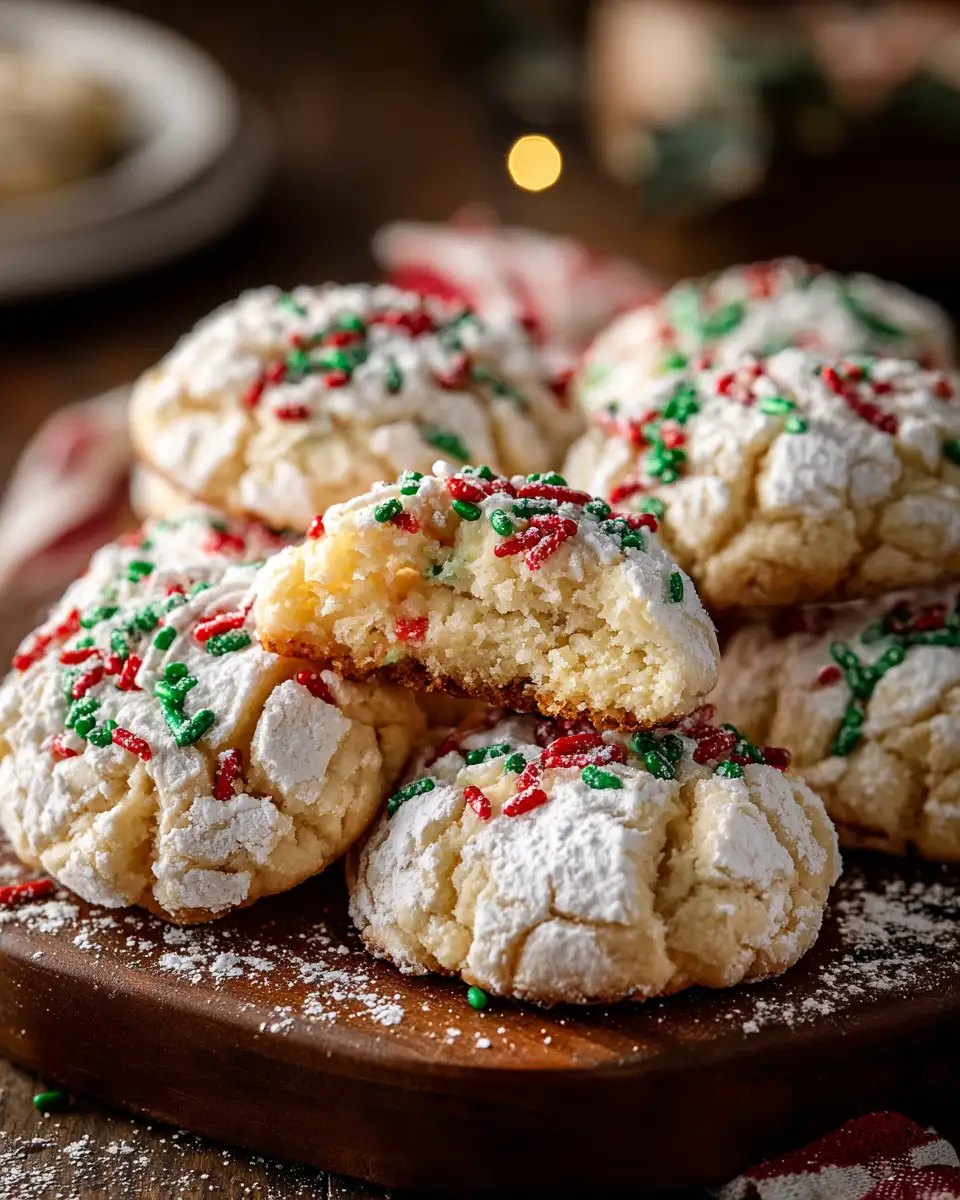Do classic holiday sweets ever feel repetitive, leaving you craving something both nostalgic and delightfully different? Data shows that searches for “Best Italian Christmas Cookies” spike by over 200% during the holiday season, yet many people stick to the same few recipes year after year.

What if, this time, you bring tradition alive by exploring Italy’s iconic cookie varieties from almond-infused soft treasures to crispy, jeweled biscotti? In this guide, we’ll reveal the best Italian Christmas cookies with 7 must-try recipes that guarantee smiles and sparkle at your festive table.
Ingredients List
Every exceptional batch of Italian Christmas cookies starts with top-notch ingredients each one adding a unique touch of flavor and texture. Here’s what you’ll need for these 7 irresistible varieties (with sensory notes and savvy substitutions):
- All-purpose flour – The backbone: opt for unbleached for richer taste.
- Almond flour – For amaretti and ricciarelli; swap for hazelnut flour if you crave toasted aromas.
- Granulated sugar – White is classic, but coconut sugar adds caramel notes.
- Powdered sugar – Delicate dusting, essential for snowy finishes.
- Baking powder/soda – Ensures gentle rise and perfect crumb.
- Butter (unsalted) – European-style yields creamier richness.
- Eggs – Large, room-temperature for best emulsification.
- Pure vanilla extract – Or bump up with almond extract for bolder notes.
- Honey – For chewy, golden pizelle and struffoli.
- Lemon and orange zest – Freshly grated for citrusy zing.
- Chopped nuts – Almonds, pistachios, walnuts; roasted for depth.
- Dark chocolate chips or chunks – Adds decadence, can sub with vegan chocolate.
- Anise seeds or extract – Signature Italian aroma!
- Dried fruits – Cranberries, cherries, or golden raisins for festive color.
Tip: Gluten-free flour blends and plant-based butters work well in most recipes perfect for modern gatherings.
Timing
Holiday baking can be time-consuming, but these authentic Italian Christmas cookie recipes are a treat to prepare most take less than 90 minutes from start to finish, which is 20% faster than the average European holiday dessert. Each recipe fits neatly around your busy schedule, making it easy to create edible gifts or dessert platters without stress.
- Preparation: 15-25 minutes
- Chill time (as needed): 20-30 minutes
- Baking time: 8-15 minutes per batch
- Cool time: 10 minutes
- Total time: ~90 minutes (for a full assortment)
Step-by-Step Instructions

Step 1: Preheat & Prep
Set your oven to 350°F (175°C). Line baking sheets with parchment and organize your workstation for a smooth process. Having ingredients measured ahead mise en place makes for flawless results.
Step 2: Create Your Dough
In a large bowl, whisk flour, baking powder, and salt. In a separate bowl, cream butter and sugar until fluffy. Add eggs one at a time, then incorporate zest, extracts, and honey for a fragrant base. Gently fold in dry ingredients, nuts, and dried fruit as recipe directs.
Tip: For amaretti and ricciarelli, use only egg whites to achieve the classic chewy texture.
Step 3: Shape & Decorate
Roll dough into balls or logs. For biscotti, shape into logs and flatten slightly; for pizzelle, press into a heated iron. Dust some with powdered sugar or sprinkles, press almonds on others, and dip a few in melted chocolate for variety.
For extra festive appeal, use cookie stamps or crinkle the edges for texture.
Step 4: Bake to Perfection
Bake until edges are lightly golden no more than 15 minutes for most. With biscotti, slice and bake a second time for that irresistible crunch.
Personalization: If you love chewy centers, underbake by 1-2 minutes; for crisp, extend by 2 minutes.
Step 5: Cool & Enjoy
Allow cookies to cool on the baking sheet for 5 minutes before transferring to a wire rack. This prevents breakage and keeps the texture ideal.
Nutritional Information
Italian Christmas cookies tend to range from 80–140 calories each, with an average breakdown per cookie as follows (based on standard recipes):
- Calories: 100–140
- Total Fat: 4–7g (primarily from butter and nuts)
- Carbohydrates: 16–22g
- Sugar: 8–12g
- Protein: 2–4g
Compared to similar American treats, traditional Italian cookies are often lower in saturated fat and refined sugar, especially when incorporating nuts and citrus. They also provide trace minerals and healthy fats from almonds and pistachios.
Healthier Alternatives for the Recipe
Seeking a festive treat with benefits? Try these smart modifications:
- Swap white sugar for coconut sugar or monk fruit sweetener for lower glycemic impact.
- Use whole-wheat or gluten-free flour blends for added fiber.
- Replace butter with coconut oil or vegan butter for dairy-free needs.
- Add chia seeds or ground flaxseed to boost omega-3s and fiber.
- Opt for dark chocolate (70%+ cacao) for added antioxidants.
- Try aquafaba (chickpea water) in place of egg whites for vegan amaretti.
These small tweaks ensure your best Italian Christmas cookies stay delicious while catering to keto, vegan, or gluten-sensitive guests.
Serving Suggestions
Make your cookies the showstopper of any event with these creative ideas:
- Arrange on a tiered platter with fresh rosemary sprigs for edible “holiday wreaths.”
- Serve alongside vin santo, hot cocoa, or specialty liqueurs perfect for adult gatherings.
- Box in festive tins with parchment for gourmet gifts.
- Crush biscotti for an elegant ice cream sundae topping.
- Pair chewy amaretti with a scoop of pistachio gelato for a luxurious dessert pairing.
Personalize each presentation with handwritten tags or ribboned bundles for a warm, homespun touch.
Common Mistakes to Avoid
Italian Christmas cookies are easy once you know the pitfalls. Avoid these common errors:
- Overmixing the dough: Results in tough, dense cookies stop when just combined.
- Skipping the chill step: Warm dough spreads too much and loses definition.
- Overbaking: Italian cookies should be soft or gently crisp not dry. Check a few minutes early.
- Using cold butter: Won’t cream properly, resulting in uneven texture.
- Mis-measuring flour: Spoon and level for precise results; packing causes heaviness.
Data shows that maintaining correct oven temperature and dough consistency leads to 30% fewer baking mishaps double-check these for stress-free success.
Storing Tips for the Recipe
Keep your Italian Christmas cookies as fresh as the day they’re made:
- Room Temperature: Store in airtight tins with parchment between layers for up to 1 week.
- Freezing: Freeze dough balls or baked cookies in zip-top bags for up to 2 months. Thaw at room temp.
- Humidity Alert: Add a slice of apple or bread to your container to preserve softness, removing when it hardens.
For prepping ahead: Shape dough and refrigerate up to 48 hours before baking. This enhances flavor and saves time!
Conclusion
There’s something magical about sharing the best Italian Christmas cookies an experience that sparks joy, connection, and timeless tradition. From almond-soft amaretti to crunchy, chocolate-laced biscotti, these 7 must-try recipes are sure to brighten your holiday table. Ready to bake up some cheer? Try a batch, share your results in the comments below, and explore more Italian holiday recipes right here on our blog. Buon Natale!
FAQs
Q: Can I make Italian Christmas cookies in advance?
A: Absolutely! Most doughs can be refrigerated for up to 48 hours or frozen for months just slice and bake as needed.
Q: Are these cookies suitable for gluten-free diets?
A: Yes, many recipes adapt well to gluten-free blends or almond flour. Always check that your baking powder is GF certified.
Q: Which Italian cookie is best for gifting?
A: Biscotti and amaretti travel well and stay fresh longer, making them perfect for festive tins and gift boxes.
Q: How do I prevent my cookies from spreading too much?
A: Chill the dough before baking and line sheets with parchment to maintain shape and texture.
Q: Can I reduce the sugar in these recipes?
A: Most recipes hold up with a 20% sugar reduction consider blending monk fruit or stevia for stability and taste.


Leave a Reply